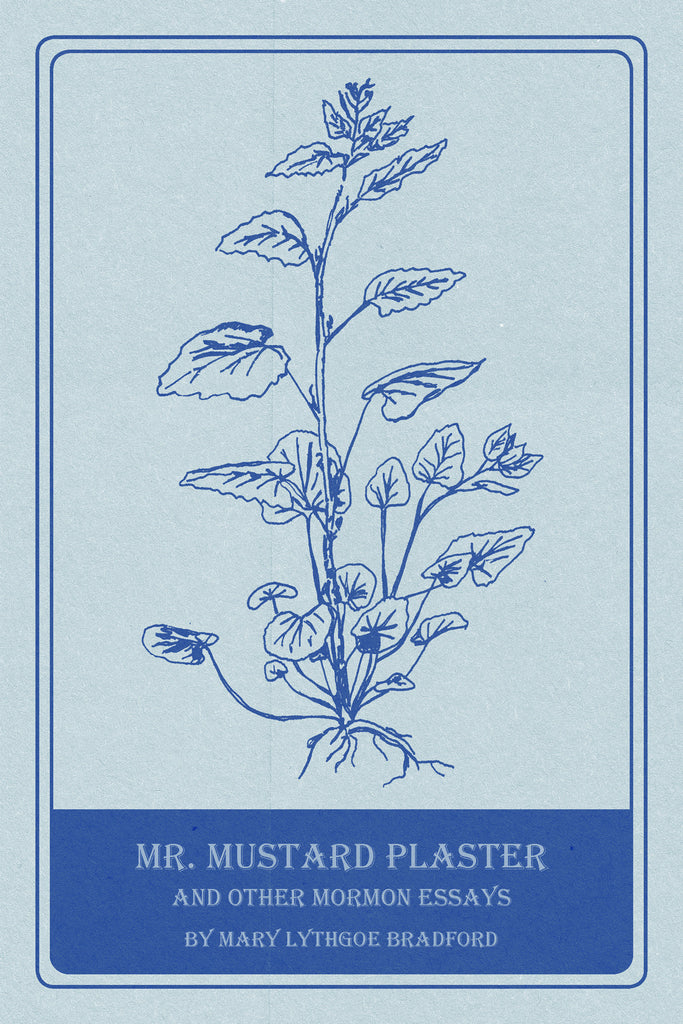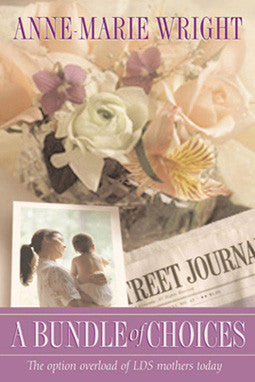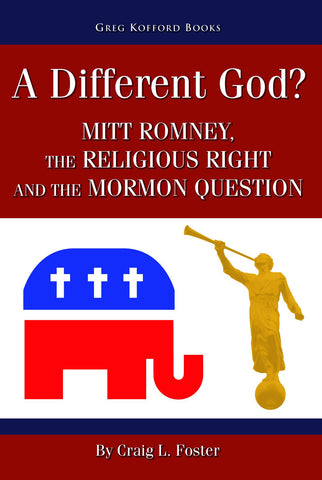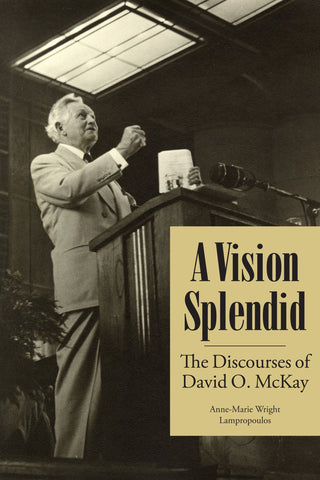Mr. Mustard Plaster and Other Mormon Essays
$20.95
- “An incredible opportunity for a new generation of Mormon readers to get to know one of our faith’s wise women elders. Don’t miss it.” — Joanna Brooks
- “Bradford has expanded our vision through the unique perspective of her poetic, feminine, and Mormon voice—a voice of grace, beauty, and deep meaning.” — Robert A. Rees
- “A profoundly authentic portrait of a Mormon life.” — Dialogue: A Journal of Mormon Thought


Available in ebook for Kindle, Nook, Apple, and Kobo.
Also available through Amazon.
Download a free sample preview.
Book Description:
Where do Mormon letters come from? How from within what has been perceived as a rigid, highly practical culture do we continually produce those faithful enough to wrestle the angels for Truth in its fully sticky and tumultuous relationship to mortality? To claim from our tradition both those practical truths which guide our daily choices, as well as those metaphorical truths—perhaps more shallow, perhaps more deep—which breath into our Mormon practices the very spirit of Life?
Poet, editor, biographer, and author Mary Lythgoe Bradford has had one of the longest and most consistent careers of anyone working in contemporary Mormon letters. This new collection, Mr. Mustard Plaster and Other Mormon Essays, conveniently provides under one cover a picaresque memoir of her impressive cultural contributions—from her graduate days, during the late century, at the University of Utah where she received her Master’s degree in English literature; through her becoming the first “Sister” to have edited Dialogue: A Journal of Mormon Thought; well, now, to her later-life career as poet and author of the collection Purple: Poems by Mary Lythgoe Bradford, published during the present century. Many more writers and readers with a love of Mormon subjects will know her from her lively personal interactions, or her regular participation in symposia, conferences and workshops—all drawing upon and her inexhaustible energy, interest, and tolerance for mentoring younger writers.
Comprehensive Table of Contents:
.
Introduction
Foreword - I, Eye, Aye: A Personal Essay on Personal Essays
I - LEAVING HOME
Yesterday the Wardhouse
Mr. Mustard Plaster
An Art Deco Childhood
Girl of the Limberlost and Lonesome Pine
Virginia Sorensen: A Saving Remnant
II - SETTLING IN
Marriage and Printmaking
Seeding In
My Christmas Disasters
Diet Dialogue
The Hourglass Factor
Pillows of My Faith
III - MOVING ON
The Diary Chain
The Veil
Gentle Dad
Surprise Party: Meditations on Aging
The Walking Cure
IV - REACHING OUT
Across the Generations
This Precious Stone
My Ten-Day Mission
A Ten-Day Expert Speaks
As We Rode Out One Late Summer Morning
V - HANGING ON
Suddenly Single
It Takes Many Villages
Sweet Home: An Epilogue
Afterword - “They Also Serve” (Who Only Sit and Write)
Q&A with the Author:
.
Q: What was the drive behind republishing these essays?
A: My daughter and I went to hear Joanna Brooks--author Book of Mormon Girl-- speak to our study group in DC. She claimed that Mitt's presidential campaign had created a Mormon Moment that writers should respond to. My daughter said, "Why not update your essay collection--Leaving Home?" I therefore contacted my publishing guru, Brent Corcoran, formerly Dialogue's production editor, who worked with me in 2009 when I published my poetry collection. Not only is he a poet himself, but he had convinced me to keep a digital file of my essays. He then took it upon himself to organize an omnibus collection of these essays, with the help of MHA artist, Thayne Whiting. I thought it made sense to rename the new incarnation with a catchier title. "Mr. Mustard Plaster" dealt with one of the themes of the book: "You can take the girl out of Utah but you can't take Utah out of the girl." I like Thayne's design of the humble mustard seed that grows into a flourishing plant--much like the personal essay The cover's botanical print, the book's layout and typeface also evoke my "Art Deco Childhood" essay. Taken together I hope it symbolizes the closest I can come to a memoir or autobiography.
Q: What motivated you to write essays in the first place?
A: Writing clarifies my life. I was a bookish child who found the best way of relating my inner world to the outer world was through literature. This naturally leads to writing--and editing. Mormons as a people practice the personal essay. We bear testimony, preach sermons, keep journals, record personal histories--even scrapbooks. Early Mormons were too busy surviving to afford the luxury of this peculiar and particular genre. As Mormonism matured, the seeds of this genre found a remarkable and welcoming soil. You might say that I took to it by nature and by nurture.
When Dialogue came along in 1966, one of its founders, Gene England, an accomplished practitioner of the essay (and a poet) asked me to contribute to the section, Personal Voices. Later as Dialogue's third editor, I kept the flame alive, actively cultivating the personal essay. At the same time I contributed regular columns, "One Woman's Perspective" to Exponent II under its creative editor, Sue Booth-Forbes. These became longer essays in my book.
Q: You have described the personal essay as "the quintessential Mormon genre." Could you elaborate on that?
A: I think I got that idea from the writings of Parley A.Christensen, professor of English at BYU. When I went there to teach in the fifties, I read his "All in a Teacher's Day?". His calm and witty dedication to the humanities was inspiring to a young neophyte. When, as wife and mother, I joined Dialogue's staff, I saw, with Gene, the personal essay as an extension of the testimony. Now in my dotage, I see it as a good way to leave a mark on the world. It seems easier to serve your life in tasty chunks instead of indigestible meals.
Q: What were some of Virginia A. Sorensen's qualities that led you to follow her so closely?
A: Virginia Sorensen, Mormon novelist of the 40's 50's and 60's, was introduced to me by my thesis chair, Dr. William Mulder at the University of Utah. As an English major and a Mormon, I naturally believed the Book of Mormon would be a good subject for poetry, and so proposed a selection of my poems as a MA thesis. I took courage from the few poems I had showed to a visiting poet who said he envied my "built-in mythology." The U's poetry professor was not convinced and so rejected it. I turned to Dr. Mulder who said, "If you are interested in a living, working Mormon writer, why not choose Virginia Sorensen," a personal friend of his. Thus began a friendship that lasted until her death in 1991. Through Virginia I became friends with her cousin, Esther Petersen, a towering example of caring public service.
In my 1956 thesis, I wrote: "Virginia writes of her grandparents, her parents, and herself that preserves something of every Western Mormon's personal history. In her works we have a special innocence, part of the fading murals historians rush to save before zealous whitewashers have rubbed them away. . . That many have not read her because of her penchant for reproducing people who suffer, bleed and die seems nothing short of blind anachronism." Virginia's stories of her childhood, indeed her children's novels that won The Child Study Award and the Newbery Medal, echoed my experience in ways that inspired my own writing. For years she lived near my home in Virginia where she urged me to write her biography. That I have been unable to do so is a major, guilty disappointment.
Q: You mention the name of Lowell Bennion quite often in your essays. Why? Who else has had a lasting influence on you and your writing?
A: I entered Lowell Bennion's Institute of Religion at the University of Utah as an eager student seeking knowledge and faith. I found in his stimulating classes and in his co-ed fraternity (Lambda Delta Sigma) a safe place to study, to question, to grow. His teaching was geared toward the student. We actually believed that he was learning from us, that he needed to hear from us. How refreshing for those of us so used to the "What am I thinking?" method of teaching. The wholesome social, recreational, service-oriented plan of this Home Away from Home caused me to think, "This is a charmed time I want to write about it." Little did I know then that I would be given the task of writing the biography of "Brother B-"as his students called him. His own personal essays were not life transformed into art or life transformed by art, but bits and pieces of himself collected for inspection. It can almost be said that his life and work were one, all of the piece, created out of whole cloth. He dedicated his life to helping his students reconcile the two worlds of university and church, the life of the mind and of the spirit. Through his teaching and writing. I caught a glimpse of my place in the scheme of things. Even today the voice of my conscience sounds remarkably like his voice.
In my long life I am constantly refreshed by minds that have not aged, in the church and out of it--The list is too long to record here, and it must include my deceased husband, so courageous and so supportive, my three children and my twelve grandchildren--always ready to champion my causes and to lift up their aging relative.
Q: Are these essays the work of a Mormon feminist?
A: I think I can call myself feminist in that I believe in equal rights for women and I give thanks for the women in my life who have unselfishly marked the path for me: my mother, grandmother, aunts, my daughter and sister, my teachers and leaders, professors, and friends. Not all have followed the same path--some have followed it out of the church--some out of their assigned roles. For better or worse I seem to occupy a middle ground. I accept the fact that the Church is part of my body and I part of the Church's body. I think the Church belongs as much to me as to anyone. I cling to the faith that some day its leaders will find a way to sit down with their sisters and work out a sharing plan. I don't claim to understand fully either myself nor my Mormon sisters, but my journey continues. It is an exciting one.
Praise for Mr. Mustard Plaster and Other Mormon Essays:
“Mary Bradford is the original literary ‘Mormon Girl.’ Long before anyone even imagined the bloggernacle, she believed that writing about everyday Mormon life—especially women’s lives—could be beautiful and powerful. In her own essays, she brings unparalleled power of perception, generous humanity, and quiet humor to bear on even challenging Mormon subjects. This book is an incredible opportunity for a new generation of Mormon readers to get to know one of our faith’s wise women elders. Don’t miss it.” — Joanna Brooks, author of The Book of Mormon Girl: A Memoir of an American Faith
“I love Mary Bradford’s essays. They are a delicious combination of personal reflections and family history! Everything I read of hers makes me hungry for more.” — Lavina Fielding Anderson, editor of Lucy's Book: A Critical Edition of Lucy Mack Smith's Family Memoir
“Mary Bradford believes that the distinctive nature of the personal essay originates from what she calls the three “I’s” (“I’s,” eyes, ayes)—the authors’ first-person perspective, their clear and rich vision, and their honest and affirming testimonies of life. Mary’s own essays are true to form: her essays are vibrant portraits of a kind and loving soul, a rich and unique perspective, and a life well-lived and deeply loved.” — Boyd Jay Petersen, author of Dead Wood and Rushing Water: Essays on Mormon Faith, Culture, and Family
“For nearly half a century Mary Bradford has perfected the personal essay, that most under-appreciated of literary genres. In revelation after revelation, she has used her life as a prism through which she has looked inward and outward, illuminating the world from the perspective Thoreau referred to ironically as ‘the narrowness of my experience.’ From such ‘narrowness’ Bradford has expanded our vision through the unique perspective of her poetic, feminine, and Mormon voice—a voice of grace, beauty, and deep meaning.” — Robert A. Rees, author of The Cost of Discipleship: The Dimensions of a Mature Mormon Faith
“Mary Lythgoe Bradford offers her autobiography in personal essay—revealing a lifetime that bridged generations and pioneered the power of essay in Mormon literature. Since the first issue of Dialogue in 1966, Mary's wisdom and presence as an editor, writer, poet and biographer have linked us together, reaching back to women like Virginia Sorensen and moving us forward into feminism. Today at 84, Mary is still helping ‘Mormon women speak.’” — Maxine Hanks, editor of Women and Authority: Re-emerging Mormon Feminism
“Mr. Mustard Plaster and Other Mormon Essays reminds me of what draws me to the personal essay as a form, how rich it is with possibilities and connections. Besides bringing a lot of joyful reading, I hope this book will inspire you to write your own essay chains so the people who come after you will know and love and celebrate your humanity, even if you didn’t have to walk from Nauvoo to Salt Lake through five-foot snow drifts uphill both ways.” — Harlow Clark, Association for Mormon Letters
“She writes with [T. S.] Eliot’s 'historical sense' of the Mormon tradition, and the result is a profoundly authentic portrait of a Mormon life. . . . Mormon culture needs Bradford-like writers now more than ever.” — Joey Franklin, Dialogue: A Journal of Mormon Thought
About the Author:

More Information:
207 Pages
Paperback ISBN 978-1-58958-742-7
Published January 2015






Share this item: